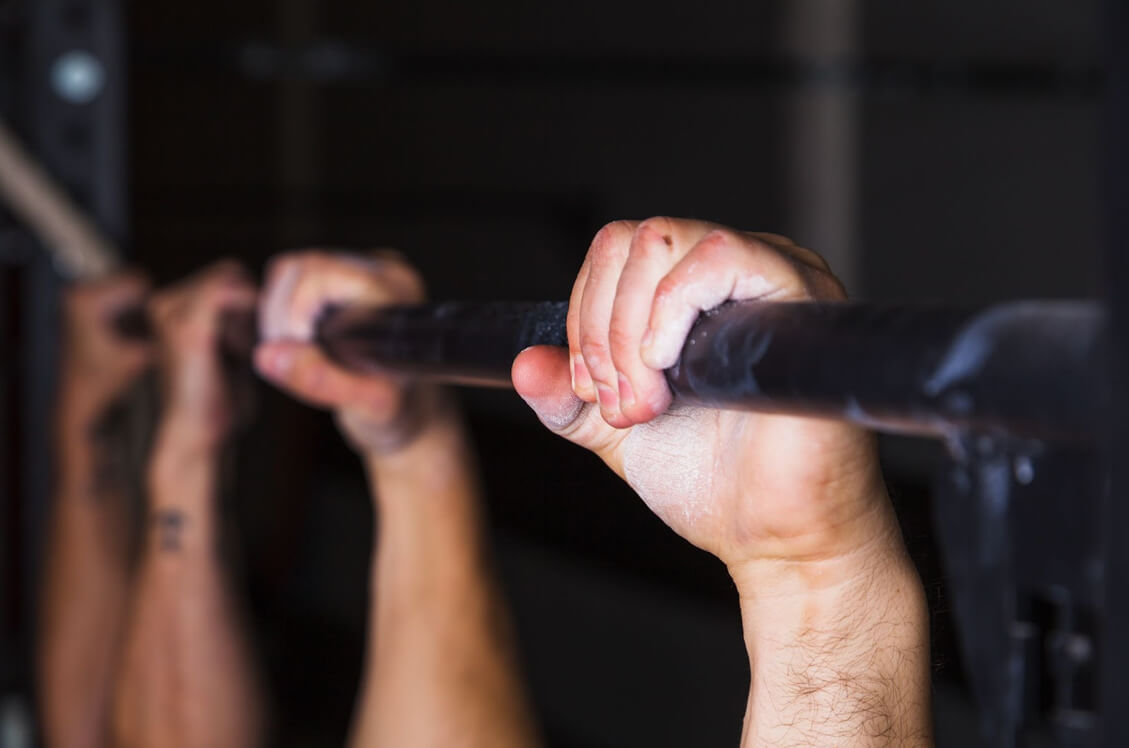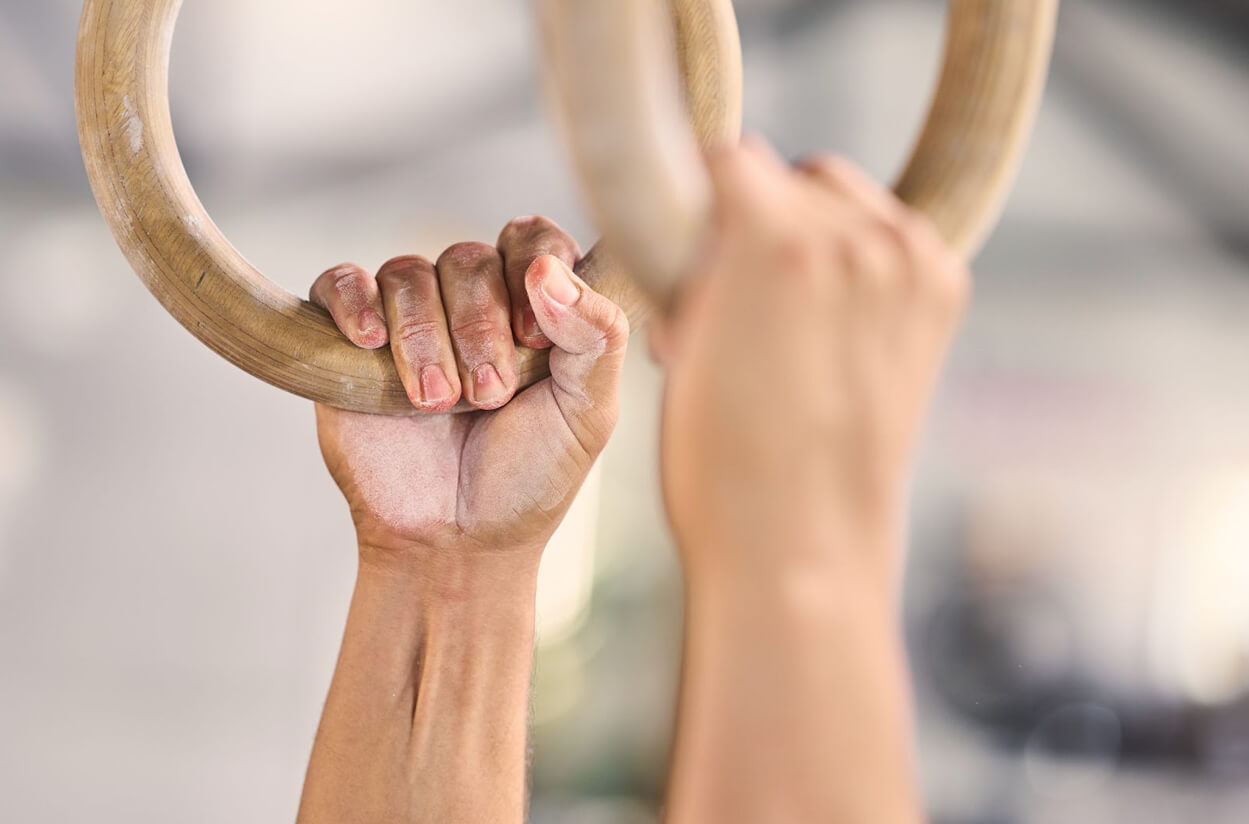
Article reviewed by: Dr. Sturz Ciprian, Dr. Tîlvescu Cătălin and Dr. Alina Vasile
Article updated on: 22-07-2025
Hand grip strength: The simple test that shows how healthy you really are
- What is grip strength and how is it tested?
- Why is hand grip strength important?
- Grip strength and metabolic health
- The connection between grip strength and brain health
- Hand grip can predict how long you live
- Recommended values for grip strength
- How to improve your grip strength and musculature
- Hand grip, the first step to a healthy future
How hard can you grip your hand? It may seem like a trivial gesture, but grip strength hides an unexpected secret: it's one of the simplest and most powerful indicators of your overall health. A test of a few seconds can tell you more about your body than you might think.
Doctors and researchers worldwide use the hand grip test to assess general health status, future disease risk, and even a person's longevity. This article explains what grip strength is, how it's measured, why it's important, and what it can tell us about metabolic health, cognitive function, mortality risk, and other aspects of your health status.
What is grip strength and how is it tested?
Grip strength or hand grip strength represents the power generated by the muscles of the hand, fingers, and forearm when we grip something in our palm. It is, practically, the measurement of hand muscle strength in actions such as making a fist, shaking someone's hand, or firmly grasping an object. Testing is usually done with a portable device called a hand dynamometer, which displays the force exerted when you squeeze a handle.
The procedure is simple: the person sits, holds their elbow bent at 90° beside their body, grips the dynamometer and squeezes as hard as they can, usually repeating 2-3 times. The highest recorded value (or the average of maximum values for each hand) represents their grip strength. The test takes only a few minutes, is not invasive, and requires minimal training of medical personnel. The equipment is relatively affordable and portable, which is why the grip test has been proposed as a potential "new vital sign" in medical practice, alongside blood pressure, pulse, etc., due to its simplicity and informative value.
In some cases, grip strength has proven to be a more efficient predictor than blood pressure for mortality risk — making it a surprisingly valuable indicator of overall health.
Why is hand grip strength important?
It may seem like just a hand test, but grip strength tells a lot about your entire body. In fact, it's a faithful reflection of your overall muscle condition. Because hand muscles are part of the kinetic chain that supports all body movements, a firm grip usually indicates solid muscle mass and good overall physical condition.
It's no coincidence that measuring muscle strength with a hand dynamometer is used in assessing frailty in the elderly. Low grip strength can signal the presence of sarcopenia (loss of muscle mass and strength) and indicates a general state of vulnerability. An international study draws attention that "weakening grip strength is associated with high mortality rates in case of serious illness onset", suggesting that reduced muscle strength is an important marker of frailty and limited capacity to cope with illness. In other words, a strong hand grip reflects not only physical strength but also the body's resistance to medical challenges.
On the other hand, high grip strength indicates good muscle status, which has beneficial effects throughout the body: it helps maintain mobility and balance, protects bones and joints, contributes to healthy metabolism (muscles influence blood sugar regulation and energy metabolism), and is associated with lower risk of functional decline with aging. Due to these connections, hand grip strength has attracted attention as a potential indicator of general health that is cheap and easy to measure.
In the words of the authors of a comprehensive study mentioned above, published in the Journal of Cachexia, Sarcopenia and Muscle: "its prognostic value, measurement simplicity (with minimal training), portability and low cost make grip strength an attractive clinical test for assessing an individual's general health status".
Next, we will detail what research has discovered about the relationship between grip strength and various health aspects: metabolic health, cognitive function (risk of cognitive decline), cardiovascular diseases, and death risk.

Grip strength and metabolic health
Strong muscles mean healthy metabolism. And grip strength is a simple but effective indicator: if you have a weak grip, your metabolism might also have problems. Studies show that people with lower grip strength relative to body weight have higher risk of metabolic syndrome, type 2 diabetes, and abdominal obesity.
Muscles don't just move the body - they also help process glucose and maintain metabolic balance. If you have reduced muscle mass or muscles affected by excess fat, the risk of insulin resistance and chronic inflammation increases – two key factors in metabolic syndrome.
In other words: a strong grip can mean better blood sugar control, less inflammation, and lower chances of cardiometabolic disease. And the good news? Muscles respond well to training – and along with them, your metabolic health.
The connection between grip strength and brain health
Interestingly, grip strength is not only a marker of physical health but also has connections with brain health. Recent studies suggest that vigorous hand grip is associated with lower risk of cognitive decline with aging. In other words, those who maintain good muscle strength seem to have a "sharper mind" in old age compared to those who are physically weak.
A massive study conducted in the United Kingdom (190,000 participants, over 12 years of monitoring) discovered a clear connection: as grip strength decreases, the risk of cognitive decline and dementia increases - especially vascular dementia. A 5 kg decrease in strength was associated with a 9–12% higher risk of cognitive problems. How is this possible? Healthy muscles stimulate brain circulation, reduce inflammation, and release myokines with neuroprotective effects. In contrast, physical weakness often goes hand in hand with sedentariness and reduced mental stimulation.
In short, good grip strength means not only a stronger body but also higher chances for a healthy and lucid brain with aging. It's yet another reason to keep your muscles active and toned.
Hand grip can predict how long you live
The best documented and perhaps most remarkable aspect of grip strength is its ability to predict mortality risk from various causes. Numerous research studies have found that people with weak hand grip have an increased risk of premature death, independent of other known risk factors such as blood pressure or cholesterol.
Grip strength functions as a true "barometer" of long-term general health status – a low score on this apparently trivial test can indicate the existence or predisposition to serious conditions that affect life expectancy. The simplicity and predictive power of this test have propelled it into the attention of researchers and doctors worldwide.
A landmark study published in The Lancet, which included over 139,000 participants from 17 countries, reached a remarkable conclusion: weak hand grip predicts death risk better than blood pressure. Surprising, when we consider that hypertension is one of the best-known cardiovascular risk factors.
In other words, whether we're talking about heart attack, stroke, or other cardiovascular diseases, decreased grip strength is associated with higher mortality.
And because the results were valid for both sexes and all age groups, the test proves to be a simple tool with global applicability.
Recommended values for grip strength
Grip strength values can be influenced by factors such as age, sex, body mass, physical activity level, but also by characteristics of the population you belong to (for example, national average, ethnicity, lifestyle).
Generally, men have significantly greater grip strength than women – about 50–60% – and strength peaks around age 30, after which it begins to gradually decline.
Grip strength is usually expressed in kilograms-force (kgf) or newtons, but most often you'll see values in kilograms – that is, static force equivalent to lifting a weight.
The values considered healthy are as follows:
Young adults (20–30 years)
- Men: 45–50 kg
- Women: 25–30 kg
Middle age (40–50 years)
- Men: 35–40 kg
- Women: 20–25 kg
Elderly (60+ years)
- Men: 25–30 kg
- Women: 15–20 kg
⚠️ Clinical alert thresholds (sarcopenia / frailty)
- Below 30 kg in men
- Below 20 kg in women
These thresholds are used in medical practice – especially by geriatricians – to assess sarcopenia, frailty, and increased risk of strength and mobility loss. They are recommended by the European Working Group on Sarcopenia in Older People (EWGSOP) and constitute an essential criterion in evaluating muscle function in adults and elderly.
In Asian guidelines (AWGS), reference values are slightly lower, reflecting population differences:
- Below 26 kg in men
- Below 18 kg in women
It's important to mention that results can vary depending on both the type of equipment used and the testing method. For example, different dynamometer models can record slightly different values, and measuring while standing tends to generate slightly higher scores compared to testing in sitting position.

How to improve your grip strength and musculature
The good news is that grip strength and muscle mass are not "fixed data" – they can be trained and improved at any age. Here are some effective strategies:
-
Train your grip directly
Specific grip exercises are essential if you want a firmer handshake:- Hanging from a bar (passive hangs)
- Farmer's walks (walking with weights in hands)
- Grip strengthener exercises (grip devices, tennis balls, resistance bands)
- Towel grip - wrap a towel around a dumbbell or bar for more intense training
-
Do compound exercises with weights
Your grip improves significantly when you work your whole body, especially with movements that involve gripping weights:- Pull-ups
- Rows (with dumbbells, barbells or cable)
- Deadlifts
- Kettlebell swings
-
Include progressive strength training
Increasing muscle mass requires gradual load progression. Work with sufficient weights so that the last repetitions are challenging but achievable with correct form. Repeat 2–4 times per week, allowing time for recovery. -
Take care of nutrition
Muscles need "raw materials." Make sure you have sufficient intake of:- Proteins (lean meat, eggs, dairy, legumes, plant proteins)
- Complex carbohydrates (for energy)
- Healthy fats (omega-3, olive oil, nuts)
- Hydration is essential for performance and recovery.
-
Rest appropriately
Strength is not built only in the gym – but also during sleep. Muscles recover and grow during rest periods. Sleep 7–9 hours per night and avoid overexertion. -
Patience and consistency
Strength is gained over time, not overnight. But with a well-structured and consistently applied plan, you can transform not only your hand grip but also your entire body composition and quality of life.
Hand grip, the first step to a healthy future
The hand grip strength test has established itself as a simple but extremely valuable tool in assessing general health status. A firm grip doesn't just reflect forearm strength but tells a broader story about your body: balanced metabolism, functional musculature, and even protection against physical and cognitive decline.
We've seen that grip strength correlates with lower risk of metabolic syndrome, diabetes, and dementia, but also with a greater chance at a long and healthy life. It's not a crystal ball that predicts the future, but an accessible and scientifically proven indicator that can provide an early warning signal when values are below average.
In conclusion, hand grip strength is one of the simplest, cheapest, and most non-invasive tests that can tell a lot about your health. Next time you shake someone's hand or lift a weight, remember: that strength in your palm is actually a reflection of your entire body.
And the best news? Muscle strength can be increased at any age. Through movement, training, and an active lifestyle, you invest not only in strength – but in health, independence, and your future.




